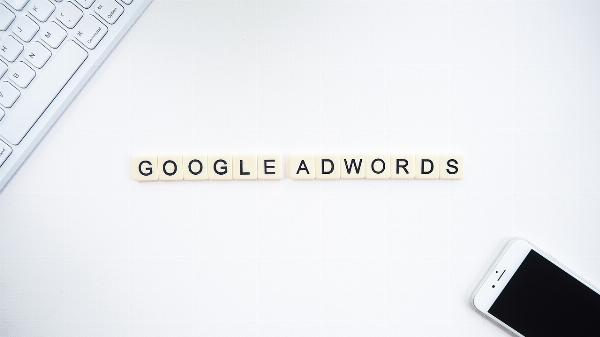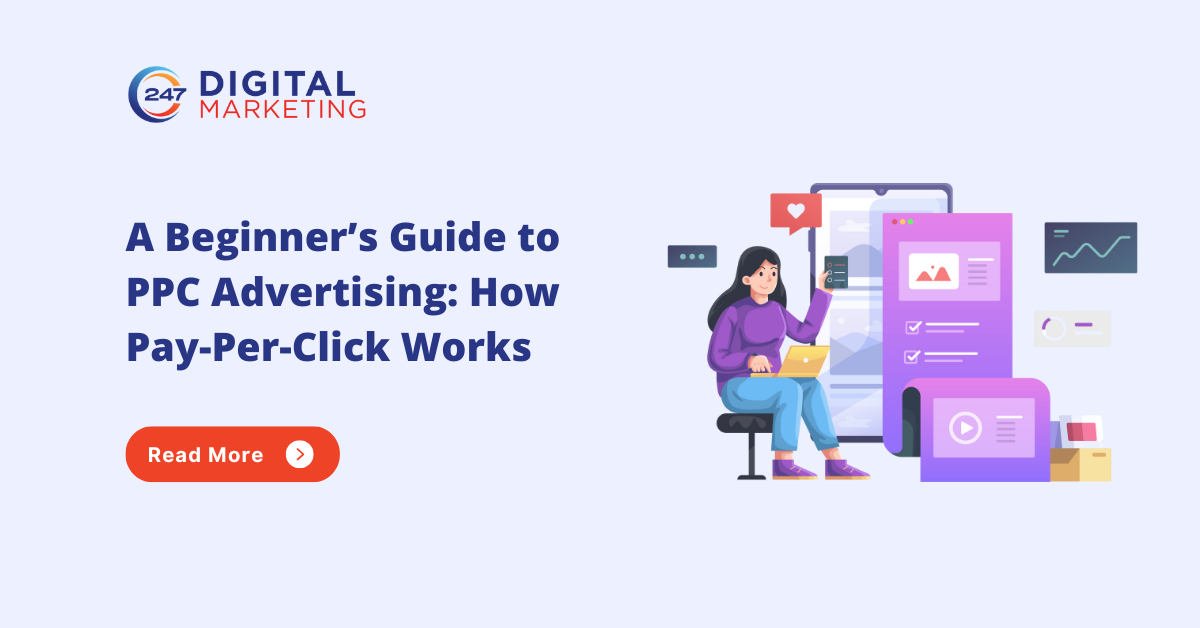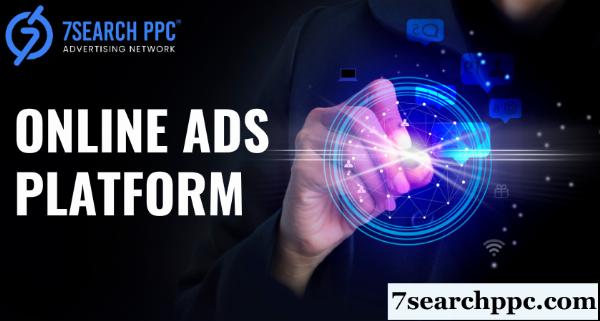The Ultimate Guide to Google Ads in 2024

Strong 8k brings an ultra-HD IPTV experience to your living room and your pocket.
Most businesses today understand the importance of online advertising, and Google Ads remains one of the most powerful tools at your disposal. In this ultimate guide, you will discover everything you need to know about harnessing Google Ads effectively in 2024. From setting up your campaigns to optimizing your ad performance, we'll walk you through the latest strategies and techniques to ensure you maximize your return on investment. Prepare to elevate your digital marketing game and achieve your advertising goals this year!
Key Takeaways:
- Advanced Targeting Options: Google Ads in 2024 offers enhanced targeting features, allowing advertisers to reach specific audiences more effectively through AI-driven insights and behavior-based targeting.
- Increased Emphasis on Automation: The platform emphasizes automated bidding strategies and smart campaigns, enabling businesses to optimize their ad performance with minimal manual intervention.
- Focus on Ad Creatives: There is a growing importance placed on creative ad formats and engaging content, with tools that support video ads and interactive experiences to capture user attention better.
Understanding Google Ads
Before delving into the intricacies of Google Ads, it is important to grasp its vast landscape. Google Ads is a powerful digital advertising platform that enables businesses to reach their consumers through targeted advertising on Google Search, YouTube, Gmail, and other affiliated websites. Whether you are a small business owner, a marketer, or a budding entrepreneur, understanding the different types and functionalities of Google Ads will equip you with the necessary tools to maximize your campaign's reach and effectiveness. In this section, we'll explore the various types of Google Ads as well as how the platform operates to help you make informed decisions for your advertising strategy.
Types of Google Ads
One of the first things to know about Google Ads is that it encompasses various ad formats tailored to cater to different marketing objectives. The primary types include Search Ads, Display Ads, Shopping Ads, Video Ads, and App Ads. Each ad type serves a unique purpose and can help you engage with potential customers at different points in their buying journey. Understanding these ad types will allow you to choose the best format for your specific goals and audience.
| Ad Type | Purpose |
| Search Ads | Text-based ads that appear on Google Search results; ideal for capturing demand. |
| Display Ads | Visual ads shown across the Google Display Network; perfect for increasing brand awareness. |
| Shopping Ads | Product-based ads that showcase items directly in search results; boost eCommerce sales. |
| Video Ads | Ads that play before, during, or after YouTube videos; engage audiences through rich media. |
| App Ads | Designed to promote mobile applications; help drive app downloads and user engagement. |
Knowing how these ad types function and where they appear can significantly affect your choice of advertising strategy. As a marketer, it's vital to align your ad selection with your target audience's preferences and behaviors. The proper combination of ad types can amplify your messaging and, ultimately, your return on investment (ROI). By understanding the unique aspects of each ad format, you can effectively cater to your audience's needs and ensure that your campaigns yield fruitful results.
How Google Ads Work
Clearly, Google Ads operates on a pay-per-click (PPC) model that requires you to bid on keywords relevant to your business. When a user searches for a term that matches your keywords, Google runs an auction to determine which ads will be displayed. This auction isn't solely about the highest bid; Google also considers the quality and relevance of your ad through a metric known as Quality Score. This takes into account the click-through rate (CTR), the relevance of your ad text, and the experience of the landing page. The combination of these factors can influence your ad's position in search results and overall campaign performance.
Your strategy should focus not only on winning the auction but also on optimizing your Quality Score through constant monitoring and adjustment. Doing so can improve your ads’ visibility without necessarily increasing your bid amount. Effective use of targeting options—such as demographics, location, and interests—can further enhance campaign performance by reaching the right audience at the right time.
For instance, if you are a business selling eco-friendly packaging, running Search Ads with keywords related to sustainable products would allow you to appear in searches from consumers actively looking for those items. By regularly assessing your campaign results, adjusting your bids, and optimizing your ad copy to ensure it resonates with your audience, you can achieve a successful campaign that drives significant traffic and conversions.
Setting Up Your Google Ads Campaign
For anyone looking to tap into the power of Google Ads, a well-structured campaign setup can significantly affect the efficacy of your advertising efforts. Understanding how to properly set up your campaign is crucial to achieve your desired results and maximize your return on investment (ROI). The following section will guide you step-by-step through the process of creating a successful Google Ads campaign, from preliminary considerations to the final touches that could elevate your campaign performance.
Step-by-Step Guide to Creating a Campaign
Even the most experienced marketers can benefit from a structured approach to setting up their Google Ads campaigns. The process begins with clearly defining your advertising goals. Do you want to increase website traffic, generate leads, or boost sales? Establishing a specific goal allows you to tailor your campaign settings accordingly. Next, you should identify your target audience based on demographics, interests, and behaviors. This helps ensure that your ads reach the right people who are most likely to engage with your business.
The next steps include choosing the right campaign type, which could be Search, Display, Video, or Shopping, among others, based on your marketing objectives. After selecting the campaign type, you will need to set a budget and bidding strategy that aligns with your goals, ensuring that you don't overspend while maximizing your visibility. Following this, you will create ad groups within your campaign, each containing relevant keywords that depict the products or services you are promoting. Keywords serve as the backbone of your campaign, allowing your ads to be displayed when users search for terms that match your offerings.
Once you have established your ad groups and keywords, you can begin crafting ad copy. This includes writing compelling headlines and descriptions that capture the essence of what makes your products or services unique. Bear in mind, your ad should also contain a clear call to action (CTA) that directs potential customers on what they should do next. Additionally, don’t forget to implement ad extensions, which can enhance your ads' visibility and performance by providing users with more information without extra cost.
| Steps | Details |
|---|---|
| Define Goals | Determine what you want to achieve with your campaign. |
| Identify Target Audience | Pinpoint demographics, interests, and behaviors of your potential customers. |
| Choose Campaign Type | Select from Search, Display, Video, or Shopping campaigns. |
| Set Budget & Bidding Strategy | Establish financial limits and determine how you'll bid for ad placements. |
| Create Ad Groups | Organize related keywords into specific groups to structure your campaign. |
| Craft Ad Copy | Write engaging headlines and descriptions with clear CTAs. |
| Implement Ad Extensions | Add features to enhance your ads and improve engagement. |
Factors to Consider When Setting Up Your Campaign
Your Google Ads campaign will only be as effective as the foundational elements that support it. Several factors must be taken into consideration to ensure your campaign is not only well-targeted but also cost-effective. First and foremost, you need to consider your budget. Decide how much you are willing to spend daily and monitor it in real-time to avoid overspending. Additionally, think about the geographic targeting for your ads; are you aiming to reach a local audience, national market, or global users? Your selections in these areas can drastically impact who sees your ads and their overall effectiveness.
- Setting a realistic budget.
- Understanding your audience’s geographic location.
- Choosing the right keywords that align with user intent.
Another aspect to contemplate is competition. Analyze what similar businesses are doing in their Google Ads campaigns. What keywords are they targeting? What ad copy seems to resonate with audiences? By examining your competition, you can glean insights that can inform and optimize your own campaign strategies. You should also consider the timing of your ads. Some products or services may have seasonality or peak periods that you need to align your campaigns with to get the best return on investment.
- Researching competitor ad activities.
- Monitoring seasonal trends relevant to your offerings.
- Evaluating ad performance and making necessary adjustments.
The ultimate goal is to position your ads to be seen by the right users at the right time, ensuring that your efforts lead to conversions. By carefully planning your campaign setup based on these crucial factors, you'll create an impactful Google Ads campaign that not only captures the attention of potential customers but also optimizes your overall advertising spend. Assume that your thorough planning and execution will help you navigate the complexities of Google Ads and drive your marketing efforts forward.
Writing Effective Ad Copy
To create ad copy that not only attracts clicks but also drives conversions in your Google Ads campaigns, it is paramount to focus on being both persuasive and relevant. You want your audience to feel an urge to act upon seeing your ad. Consider conducting thorough keyword research in advance to understand what terms your potential customers are using. Incorporate these keywords naturally into your ad copy, ensuring that your ads meet user intent. The ultimate goal is to create an appeal that resonates deeply with your audience, leading them to take action—whether that’s making a purchase, signing up for a newsletter, or downloading an app.
Tips for Writing Compelling Ad Copy
To elevate your ad copy above the competition, it’s necessary to keep it clear, concise, and compelling. One strategy is to start with a strong headline that addresses a pain point or need. This draws immediate attention and highlights how your product or service can resolve that issue. Following the headline, your description lines should elaborate on this resolution, including key benefits without overwhelming your reader with information. Always ensure your copy aligns with the landing page, as users should find a seamless transition from ad to page, which increases your conversion chances.
Incorporating a clear call-to-action (CTA) is another critical element in crafting effective ad copy. Your CTA should tell your audience exactly what you want them to do next. Be specific and action-oriented, using phrases like "Shop Now," "Get Your Free Trial," or "Learn More." Experiment with various CTAs to see which resonates best with your audience. Additionally, establishing a sense of urgency can compel users to act quickly; phrases like “limited time offer” or “only a few left in stock” can drive immediate responses. Finally, don’t forget to use strong, descriptive language that brings your offer to life and creates an emotional connection with your audience.
- Focus on user benefits rather than just features.
- Use emotional triggers to create urgency.
- Test different headlines and CTAs to optimize performance.
- Keep your message consistent across ads and landing pages.
Knowing how to effectively leverage these strategies can significantly enhance your ad performance and foster a loyal customer base.
Copy for your ad extensions can either enhance your ad's visibility or provide additional information that encourages clicks. Ad extensions allow you to add more value to your ads by providing extra information such as location, additional links, phone numbers, or even additional text to showcase your unique selling propositions. Not only do these extensions take up more real estate on the search results page, but they also give your customers a clearer understanding of what you offer, making them more likely to click on your ad compared to a standard text advertisement. Utilizing relevant extensions tailored to your marketing goals can optimize your ads for better performance.
Best Practices for Ad Extensions
Copy is only half of the equation when it comes to successful Google Ads; ad extensions play a crucial role in maximizing your ad’s effectiveness. You should make it a habit to utilize as many relevant ad extensions as possible. For example, location extensions can direct potential customers to your store, while call extensions provide immediate contact options for inquiries. Make sure to regularly review the performance of these extensions to assess which ones are driving engagement and conversions. Additionally, you can customize your ad extensions based on your specific promotions and goals, allowing for a more tailored approach that can sway potential customers.
Another important fact to consider is that ad extensions often impact your ad rank. Using relevant extensions not only enhances visibility but can also improve your Quality Score, which can ultimately lower your costs per click. Therefore, it's vital to stay proactive in managing your ad extensions. Regularly update and test the various types of extensions available to you, such as structured snippets or price extensions, to see which yield the best results for your campaigns. By effectively implementing and optimizing ad extensions, you’re set up for better click-through rates and improved ad performance overall.
Optimizing Your Google Ads Campaign
Your Google Ads campaign’s success hinges on a multitude of factors that can significantly affect ad performance. Understanding these elements is imperative for you if you wish to maximize your return on investment. One of the primary factors is the quality of your keywords. Your choice of keywords not only impacts how often your ads appear but also their relevance to potential customers. If the keywords are too broad, you may attract clicks from users who are not genuinely interested in what you offer. Conversely, overly narrow keywords might reduce your ad visibility, restricting your reach to a smaller audience.
In addition to keyword selection, ad copy plays a significant role in capturing user attention and driving clicks. High-quality, compelling, and relevant ad text that resonates with your target audience can make a significant difference in performance. The use of dynamic frameworks can help tailor ad messages that align with user searches. Landing page experience is another critical factor; if users click on your ad but find the landing page irrelevant or difficult to navigate, they are likely to bounce, damaging your ad performance score.
Lastly, your bidding strategy and ad placement also significantly impact results. Choosing between manual and automated bidding methods can affect how frequently your ads are displayed compared to competitors. Furthermore, placing ads on the Google Display Network versus Google Search can also yield different responses based on your target demographic. You should regularly analyze these aspects to ensure they are optimally adjusted to the changing market landscape. Knowing these factors will allow you to make educated choices that can lead to improved ad performance.
- Ad relevance and content quality
- Keyword selection and match types
- Landing page experience
- Bidding strategies and placements
- Ad extensions and targeting options
Tips for Improving Ad Performance
Google Ads can be tricky, but you can significantly enhance your campaign’s performance by applying some effective strategies. One of the most straightforward ways to improve ad performance is by continually refining your keywords. Regularly review and update your keyword list based on the data you gather from past campaigns. Consider integrating negative keywords to prevent your ads from showing in irrelevant searches, ultimately saving you money and increasing the quality of your traffic.
Another crucial tip involves focusing on your ad copy. Your ads need to stand out in crowded search results. Try A/B testing different versions of ad copy to see which variations resonate more with your audience. This process helps you determine what language, tone, and messaging lead to optimal click-through rates. Incorporate strong calls to action (CTAs) in your ads to encourage users to take the desired action rather than simply clicking.
Additionally, consider leveraging ad extensions to provide more information without cluttering your main ad content. Using extensions such as sitelinks can improve your ad engagement rates by offering users multiple interaction points. Employing these tactics consistently will contribute greatly to improving your overall ad performance, ensuring that your campaign remains competitive in the ever-evolving world of online advertising. The insights you gather can help you make data-driven decisions that optimize your ROI.
- Conducting thorough keyword research
- Implementing regular A/B testing on ad creatives
- Utilizing various ad extensions
- Adjusting bids based on performance data
- Tracking and analyzing competitor strategies
Affecting ad performance goes beyond just basic management; it requires you to stay informed and proactive. One effective way to do this is by utilizing Google Analytics alongside your Google Ads insights. This combination allows you to track user behavior once they interact with your ads, informing you which aspects of your campaigns are working and which areas require adjustments. Periodic audits of your campaign data can uncover new trends and opportunities to capitalize on, allowing your ads to remain fresh and relevant. The conversion rates and engagement levels you achieve will determine the efficiency of your spending, enabling you to achieve your desired business results.
- Regularly updating your keyword lists
- Integrating negative keywords to filter unwanted clicks
- Analyzing user behavior through Google Analytics
- Conducting periodic audits of campaign performance
- Exploring new ad formats and placements
Measuring and Tracking Success
Understanding Google Ads Metrics
For anyone looking to optimize their Google Ads campaigns, understanding metrics is crucial. You may find yourself overwhelmed by the multitude of metrics available, but focusing on the most impactful ones can help you gauge the effectiveness of your campaigns. Metrics such as Click-Through Rate (CTR), Conversion Rate, Cost Per Acquisition (CPA), and Return on Ad Spend (ROAS) are fundamental to your success. By comprehensively analyzing these key performance indicators (KPIs), you'll be well-positioned to make informed decisions about how to adjust your strategy and maximize your ROI.
Your CTR indicates how well your ads are resonating with your target audience. A low CTR might suggest that your ad copy or targeting needs improvement. Conversely, a high CTR reflects that users are motivated to engage with your content, which is a positive indication of your ad relevance and appeal. Similarly, tracking your Conversion Rate allows you to see how effectively your landing pages convert visitors. If your CTR is high but your Conversion Rate is low, it may point to issues in your sales funnel that need addressing.
It's also important to keep an eye on your CPA and ROAS. Your CPA pinpoints how much you're spending to acquire a customer, which is vital when evaluating the cost-effectiveness of your ads. A high CPA may necessitate adjusting your bids or targeting to achieve better results. Meanwhile, ROAS provides clarity on the revenue generated from your ad spend. A positive ROAS indicates that you are making more money from your campaigns than you are spending, guiding you on how to scale successful ads while dialing back on those that underperform.
Setting Up Conversion Tracking
For effective measurement and optimization of your Google Ads campaigns, it’s critical that you set up conversion tracking. You want to track specific actions on your website that matter to your business, such as purchases, newsletter signups, or form submissions. By tracking conversions, you gain insights into which ads, keywords, and targeting strategies are driving actual business value. Without tracking conversions, you're left guessing about your ROI, and it's challenging to optimize your campaigns effectively.
Your first step in setting up conversion tracking is to decide what constitutes a conversion for your business. This could be a sale, a lead, or another action that you value. After identifying these key actions, you'll need to implement the Google Ads conversion tracking tag on your website, which can either be done manually or via integrations with platforms like Google Tag Manager. Ensuring that your conversion tags are correctly placed on the relevant pages—such as your confirmation or thank-you pages—will enable accurate tracking of user actions.
Setting your conversion tracking system correctly also allows you to analyze how different campaigns perform in terms of efficiency and effectiveness. With this data, you can evaluate which ads are yielding the best conversions and adjust your marketing strategy accordingly. This not only ensures that your budget is being wisely allocated but also empowers you to refine your targeting strategies to attract more of your ideal customers.
Advanced Google Ads Strategies
After immersing yourself in the basics of Google Ads, it’s time to elevate your campaigns with advanced strategies that can significantly enhance your advertising performance. By incorporating these strategies, you can stay ahead of your competition and make the most of your advertising budget. Here are some advanced tactics that can guide you in maximizing your Google Ads potential:
- Leverage Automated Bidding Strategies
- Implement Audience Targeting Techniques
- Utilize Remarketing Lists
- Prioritize Ad Extensions
- Experiment with A/B Testing
- Optimize Landing Pages
- Utilize Dynamic Search Ads
- Implement Smart Shopping Campaigns
- Explore Video Ads
- Utilize Data-Driven Attribution
| Strategy | Description |
|---|---|
| Automated Bidding | Using machine learning to set bids for you, aiming to achieve your performance goals. |
| Audience Targeting | Identifying and reaching specific groups of potential customers based on behavior and demographics. |
| Remarketing | Re-engaging users who have previously interacted with your website or ads. |
| Ad Extensions | Enhancing your ads with additional information that encourages clicks. |
| A/B Testing | Comparing two or more versions of your ads to determine which performs best. |
| Landing Page Optimization | Improving the relevance and quality of landing pages to boost conversion rates. |
| Dynamic Search Ads | Automatically generating ads based on the content of your website. |
| Smart Shopping Campaigns | Utilizing Google's machine learning to optimize product ads across various platforms. |
| Video Ads | Incorporating video content into your ad strategy for increased engagement. |
| Data-Driven Attribution | Attributing conversions based on how users engage with your ads across multiple channels. |
Pros and Cons of Automated Bidding
Pros of Automated Bidding:
| Pros | Cons |
|---|---|
| 1. Saves Time | 1. Less Control Over Bids |
| 2. Optimizes for Conversions | 2. Dependent on Algorithm |
| 3. Real-time Adjustments | 3. Learning Period |
| 4. Works with Large Data Sets | 4. Potential for Unpredictable Costs |
| 5. Focus on Business Goals | 5. May Overspend If Not Monitored |
Automated bidding strategies can be incredibly beneficial as they save you time and allow you to focus on other vital aspects of your advertising campaigns. By utilizing machine learning, these bidding options aim to optimize your bids to enhance conversions effectively. You will find that it can automate many of your daily optimization tasks, giving you back precious hours for strategic planning and creativity in your ad campaigns.
However, while automated bidding offers considerable advantages, there are drawbacks as well. You may experience a lack of control over your bids, as the algorithms handle everything in real-time based on predefined goals. This means you might find yourself in a situation where costs fluctuate dramatically, making it crucial to monitor performance and adjust settings based on your campaign needs. During the initial learning phase, performance may also dip as the system gathers necessary data.
Ultimately, automated bidding can lead to significant improvements in your ad performance, especially when you set clear conversion goals. By understanding both the benefits and potential pitfalls, you can make informed decisions about when and how to implement these strategies to ensure they align with your specific business objectives.
Using Audiences and Remarketing
There's no denying that leveraging audience targeting and remarketing can significantly enhance your Google Ads campaigns. When you utilize audience insights, you'll be able to tailor your ads to meet the needs and preferences of various segments of your target market. This means you can create ads that resonate more with potential customers, driving higher engagement and conversion rates. Additionally, by specifically targeting users who have already interacted with your website, remarketing allows you to stay top of mind and encourage repeat visits, which can lead to improved customer loyalty and sales.
One of the most powerful aspects of using audiences and remarketing is the ability to segment your audience based on their behaviors, demographics, interests, and previous interactions with your brand. You can create customized ads that speak directly to their specific needs, making it more likely that they will click through and convert. For instance, if a user added a product to their cart but did not complete the purchase, you can design a remarketing ad that reminds them of the item and perhaps offer a limited-time discount to incentivize them to finalize the transaction. This level of personalization not only boosts your ad's performance but also enhances the overall user experience.
Plus, with Google Ads' robust audience targeting options, you can use in-market audiences, similar audiences, and even customer match lists to reach those who are most likely to be interested in your offerings. By constantly monitoring campaign performance and adjusting your audience targeting strategies, you ensure that your ads are reaching the right people at the right time, thus maximizing your return on investment. Overall, incorporating audiences and remarketing into your Google Ads strategy will undoubtedly provide a significant boost to your advertising efforts, allowing you to engage customers more effectively and ultimately drive more conversions.
To wrap up
Ultimately, as you navigate the ever-evolving landscape of digital marketing, understanding Google Ads in 2024 will be necessary to your success. With the platform consistently introducing new features and updates, it is paramount that you stay informed about the latest tools and strategies available. By thoroughly familiarizing yourself with the advanced targeting options, budgeting alternatives, and ad formats, you will empower your campaigns and enhance your ability to reach your specific audience. Your endeavors in adopting an innovative approach will not only optimize your ad spend but will also allow for more personalized connections with potential customers, leading to higher conversion rates and a robust ROI.
The importance of continual learning in the world of Google Ads cannot be overstated. As the year progresses, make it a priority to monitor industry trends and case studies that can provide insight into effective practices. Additionally, leverage Google's resources, such as the Ads Help Center and Google Ads Community, to refine your approach and overcome any challenges you encounter. By adopting a mindset of adaptability and being proactive in improving your strategies, you will position yourself as a knowledgeable marketer who can navigate through the complexities of Google Ads in 2024.
Thus, mastering Google Ads this year isn't merely about understanding the tools but also about fostering a vision for how these campaigns align with your business goals. As you enhance your skills, remember that the key to successful advertising lies not just in execution, but also in measuring outcomes and optimizing performance continually. Equip yourself with the knowledge gained from this comprehensive guide and approach your campaigns with confidence. Embrace the opportunities ahead, and you'll be well-prepared to leverage Google Ads to elevate your brand in 2024 and beyond.
FAQ
Q: What are the key features of Google Ads in 2024 that marketers should be aware of?
A: In 2024, Google Ads has evolved with several key features designed to enhance targeting and maximize ad effectiveness. One significant addition is the enhanced AI-driven automation tools that optimize campaign management automatically, allowing marketers to focus on strategy rather than manual adjustments. Additionally, the introduction of Performance Max campaigns provides a holistic approach by allowing advertisers to run ads across all Google channels (Search, Display, YouTube, etc.) from a single campaign. Other notable features include improved audience segmentation, advanced reporting capabilities, and more streamlined budget management tools to help businesses allocate their advertising spend more effectively.
Q: How can businesses set up an effective Google Ads campaign for 2024?
A: To set up an effective Google Ads campaign in 2024, businesses should start by defining clear objectives, whether it's increasing brand awareness, generating leads, or driving sales. Next, conduct thorough keyword research to identify the right terms your target audience is searching for and consider using long-tail keywords for lower competition. Once you have your keywords, create compelling ad copy that speaks to your audience's needs and includes an effective call to action. Additionally, take advantage of the Performance Max campaigns to automate and optimize ad placements across Google's ad network. Finally, continuously monitor and adjust your campaigns based on performance data, utilizing A/B testing to refine ad elements such as headlines and visuals over time.
Q: What are the common mistakes to avoid when using Google Ads in 2024?
A: When using Google Ads in 2024, it's crucial to avoid several common mistakes. Firstly, one of the biggest pitfalls is neglecting to regularly review and adjust campaigns; successful ad strategies require continuous optimization based on performance metrics. Another common error is failing to target the right audience; utilizing tools like custom intent audiences can help reach the most relevant users effectively. Additionally, some advertisers may overlook the importance of mobile optimization; ensure that your ads and landing pages are mobile-friendly, as a significant portion of traffic now comes from mobile devices. Finally, avoid setting undefined budgets—be sure to allocate your ad spend thoughtfully based on what insights reveal about return on investment (ROI).
Note: IndiBlogHub features both user-submitted and editorial content. We do not verify third-party contributions. Read our Disclaimer and Privacy Policyfor details.








